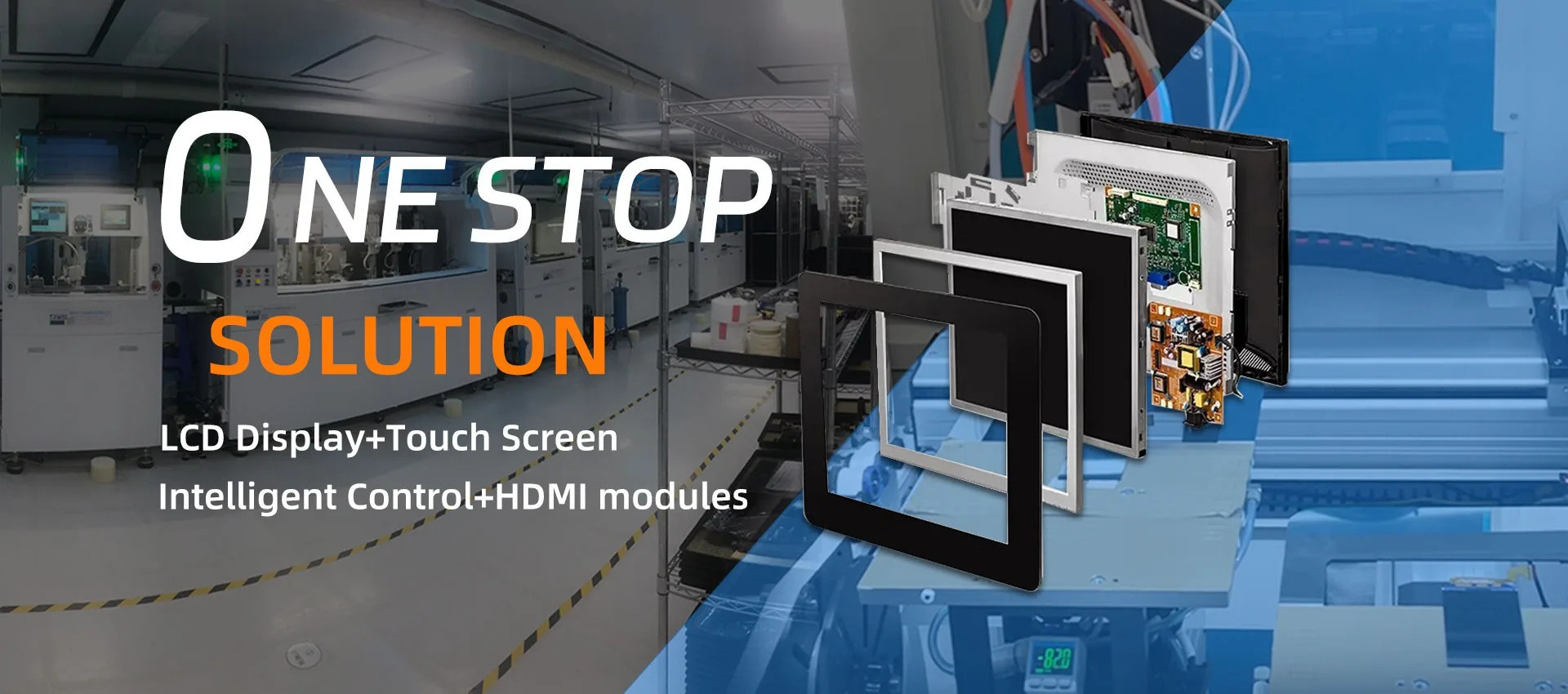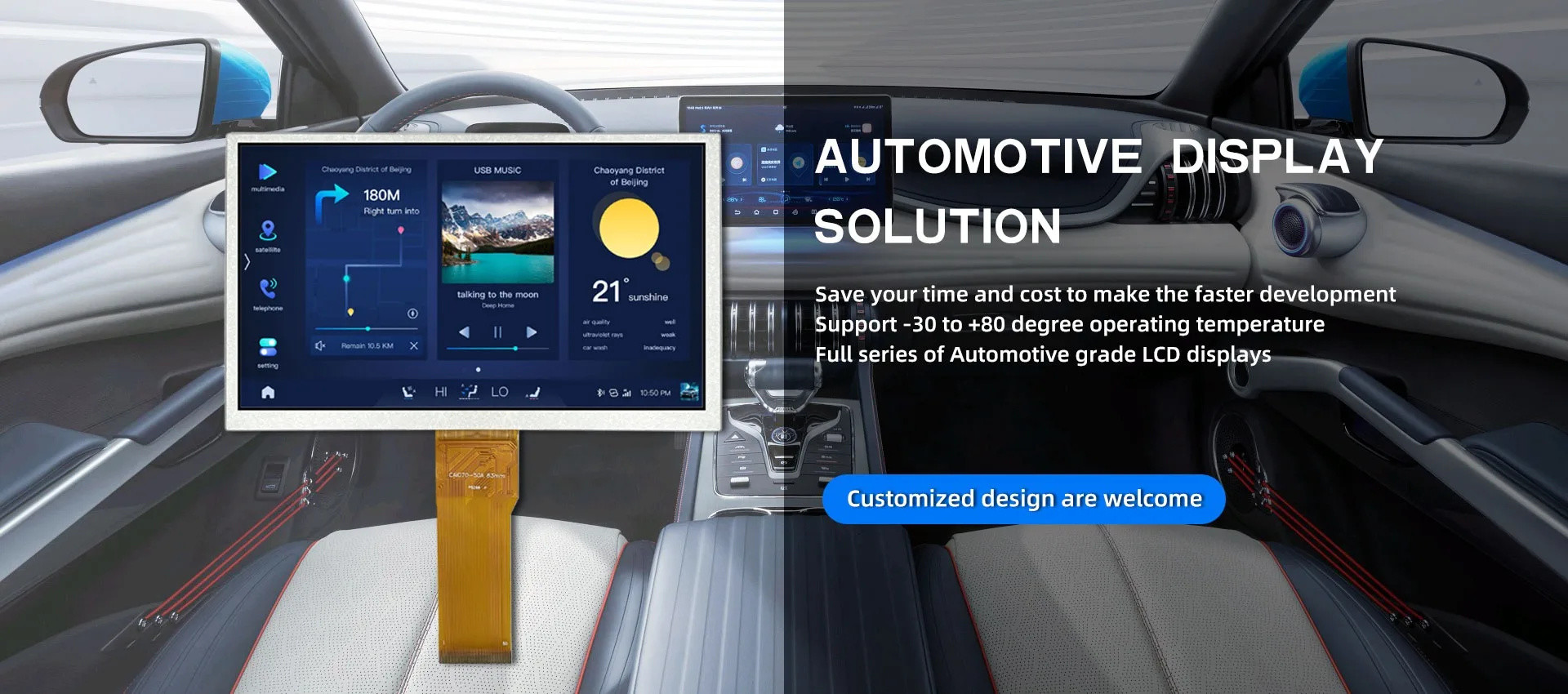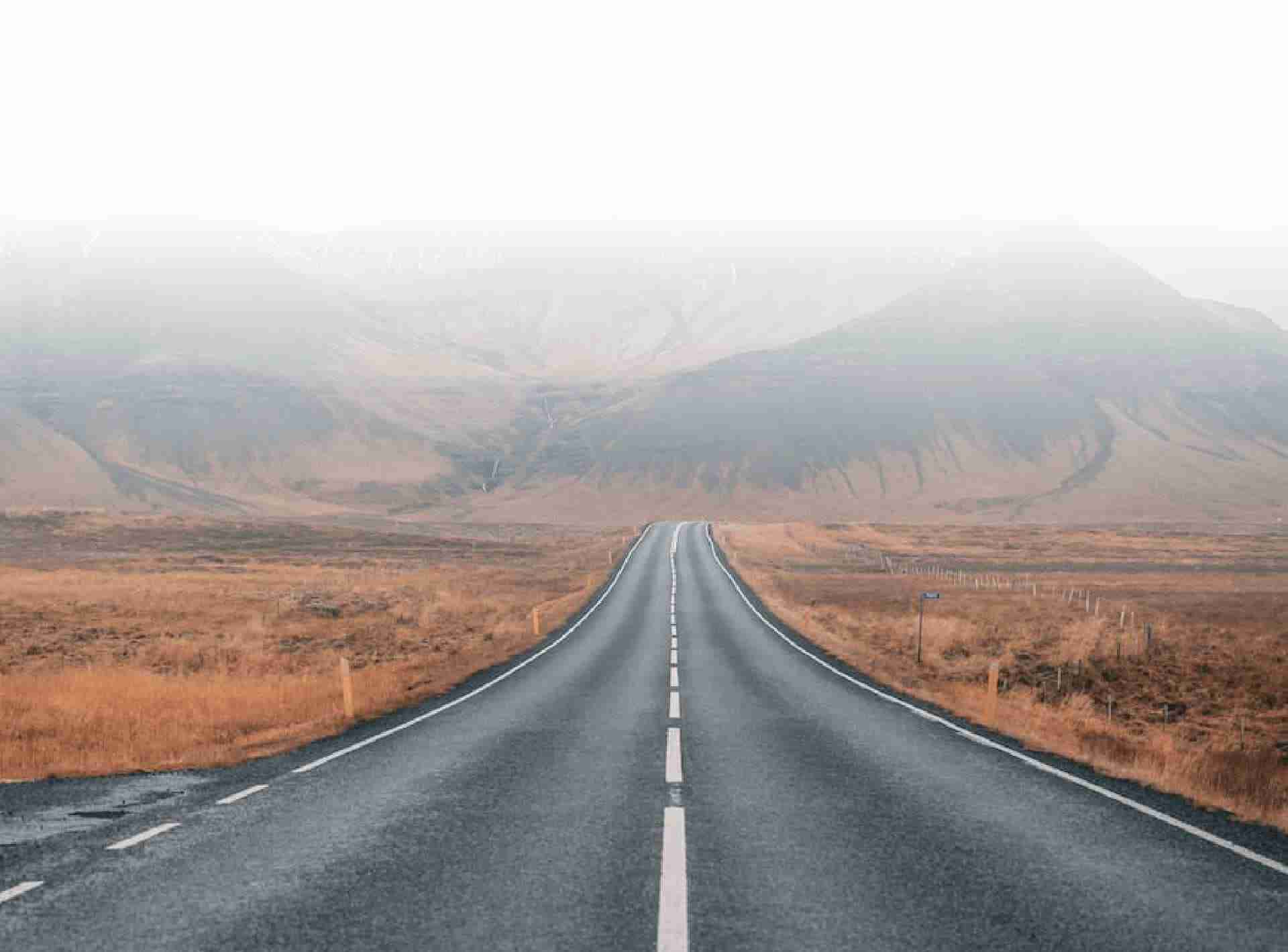What is the difference between OLED LCD screen and TFT LCD screen
2025-06-13
OLED relies on its own light emission to display images, without the need for a backlight source and not affected by surrounding light. Its lifespan is generally around 5000 times. TFT is an active matrix liquid crystal that requires the brightness of the backlight source to display images and is affected by surrounding light. Its lifespan is generally around 20000 times.
OLED LCD screen
OLED organic light-emitting display screens are fundamentally different from traditional LCD display methods in that they do not require a backlight source. They use very thin organic material coatings and glass substrates, which emit light when current passes through them.
Therefore, OLED LCD screens can be made lighter and thinner, with a larger viewing angle, and also more energy-efficient. However, it has a short lifespan and cannot make the screen larger. OLED is often used for foldable phone external screens.
TFT LCD screen
The abbreviation for TFT thin film transistor is currently the top-level material LCD screen, belonging to the active matrix type LCD screen. The back is equipped with special light tubes, which can "actively" control each independent pixel on the screen. This is commonly known as active matrix TFT, which has a relatively fast response time of about 80 milliseconds and a large viewing angle, usually reaching about 130 degrees. It is used in some high-end models. Due to the memory based arrangement of TFT LCD screens, they do not immediately return to their original state after the current disappears, effectively improving the ability to play dynamic images. The disadvantage is that it consumes a lot of electricity and the manufacturing cost is also relatively high.
OLED color screens are 30% more expensive than TFT color screens of the same size! The biggest difference between true color OLED screens and TFT screens is that OLED true color screens have a relatively high screen contrast and fuller color reproduction. In terms of backlighting and brightness, OLED true color screens are superior to TFT screens.
View More
Why are OLED LCD displays widely used in the market
2025-06-12
With the advancement of technology, our phones are becoming thinner and longer. Have you ever fantasized about your phone being able to bend or even fold? These products have only been seen in movies, but now with the emergence of OLED displays, this may be possible in the future. Not only mobile phones, but also tablets that can be folded for transportation would be more convenient to carry? So let's first understand what OLED is.
OLED, also known as organic light-emitting diode, is a new type of light-emitting diode based on the electroluminescence effect of organic materials. LCD is a widely used liquid crystal display. With the maturity of OLED technology and the decrease in cost, OLED is expected to replace existing LCD technology in the future and become the dominant technology for upgrading next-generation display technology.
What are the advantages of OLED compared to LCD?
OLED is thinner, more energy-efficient, faster in response, has lower cost of scale, and can display curved and flexible surfaces compared to LED. After mass production, the cost of OLED is 30% lower than that of LED.
OLED has so many advantages compared to LCD, why hasn't it been widely used in the market yet?
Although OLED has many advantages mentioned above, which make it highly likely to become the new generation mainstream display technology in the future, there are still some problems that restrict the widespread promotion of OLED.
The price is relatively high, especially on large-sized TVs, which is significantly higher compared to LED TVs of the same specifications, affecting consumers' purchasing decisions.
The yield rate is low, which is one of the important indicators to measure the maturity of panel production lines and has a significant impact on production costs. Therefore, the low yield rate is also one of the main reasons for the high cost of OLED currently.
has a shorter lifespan. The OLED currently used in mobile phone displays can maintain 5000 to 10000 hours, while OLED TVs must maintain at least 30000 to 50000 hours.
Insufficient production capacity hinders the development of terminal manufacturers. Currently, the supply of OLED is mainly controlled by Samsung alone. Insufficient production capacity will cause concerns among terminal brand manufacturers about supply safety, which will restrict the greater use of OLED products.
Why is it still said that OLED replacing LCD is a big trend?
Apple leads the way. Apple will use OLED screens on iPhones in 2017. Apple has a huge influence on the smartphone industry and supply chain, leading the technology trend multiple times. Its involvement has brought about significant changes in the entire OLED industry chain, and various manufacturers attach great importance to it and are laying out their strategies.
LG and Samsung's OLED leader layout. In February 2016, Samsung announced plans to invest 4 trillion Korean won (approximately 3.6 billion US dollars) to build a new OLED factory. According to the Korean Herald, Apple and Samsung have signed an agreement, with the latter providing Apple with approximately 100 million 5.5-inch OLED panels worth 3 trillion Korean won (approximately 2.59 billion US dollars) in 2017. The contract is valid for at least 3 years, meaning until 2018 and 2019. On July 23, 2015, LG announced that it would invest 150 trillion Korean won in the Guiwei factory in Gyeongsangbuk do to build a 6th generation flexible OLED production line with a planned monthly production capacity of 7500 glass substrates. The production is scheduled to begin in the first half of 2017.
In addition, the most suitable screen for smart devices represented by VR devices is OLED. The development of VR cannot be separated from the popularity of OLED, which will drive the explosion of OLED demand; BOE, Samsung LG、 The production of OLED production lines by major panel manufacturers such as Sharp has stimulated a significant increase in OLED panel output, directly driving a surge in demand for upstream OLED materials; Chinese companies have made technological breakthroughs in OLED materials and successfully achieved import substitution; Large scale application of quantum dot materials in China, breakthrough progress in QLED inkjet printing technology.
View More
What are the factors that affect the price difference of bar shaped LCD screens
2025-05-23
Nowadays, the use of strip LCD screens is quite widespread, and there are also many types of strip screen products on the market. Some products from different manufacturers have significant price differences, which is very troublesome for consumers, who do not know how to distinguish and choose. Due to the different price positioning of strip LCD screens produced by various manufacturers, the quality requirements are also different. So, what are the factors that cause different prices of strip LCD screens? Let's give a brief introduction below.
1. Viewing angle of bar LCD screen
For current LCD displays on the market, the viewing angle is symmetrical, but not necessarily vertical. The vertical viewing angle is usually smaller than the horizontal viewing angle. Due to the directionality of the light source of the backlight tube after refraction and reflection, color distortion occurs when viewed beyond this range. Generally, the horizontal viewing angle is the main parameter, and the larger the value, the larger the viewing angle.
2. Brightness and contrast of bar LCD screen
Brightness is one of the important indicators reflecting the performance of liquid crystal displays. The brightness of LCD screens is measured in square candles (cd/m2) or nits, and is generally between 100-130 nits. It should be noted that data is not the entirety of product performance, and brighter products may not necessarily be better products. The key is whether the brightness is uniform, which cannot be found in the product specification manual. The uniformity of brightness is closely related to the number and configuration of light sources and mirrors. Places far away from the light source will inevitably have darker brightness.
3. Response time and refresh rate (i.e. scanning frequency) of bar LCD screen
Response time is a specific indicator of LCD displays, which refers to the speed at which each pixel of the LCD display responds to input signals, measured in milliseconds (ms). The smaller the response time, the faster the pixel response, while the longer the response time, the more severe the display tailing phenomenon when displaying dynamic images (even mouse cursor). Currently, the standard response time for LCD displays should be below 30ms.
4. Pixel spacing of bar LCD screen
The pixel pitch of a bar LCD screen is similar in meaning to the dot pitch of a CRT. However, the former is not as important to product performance as the latter. The number of pixels in LCD displays is relatively fixed, therefore, as long as the size and resolution are the same, the pixel spacing of all products should be the same. For example, a 15 inch LCD monitor with a resolution of 1024 × 768 has a pixel pitch of 0.297mm (some products are also labeled as 0.30mm).
View More
Performance and indicators of polarizing film for LCD display
2025-05-23
Performance and indicators of LCD polarizer
The optical performance of polarizing film includes three main performance indicators: polarization degree, transmittance, and color tone.
Other performance indicators include UV resistance, transmittance, total reflectance, and diffuse reflectance of semi transparent polarizing film semi permeable membranes. In the use of general LCD products, it is required that the higher the polarization and transmittance performance indicators, the better. The higher the polarization and transmittance, the higher the display efficiency of LCD display devices and the lower the relative energy consumption. But for conventional iodine dyed polarizing film products, polarization degree and transmittance are contradictory. The higher the polarization degree, the lower the transmittance, and it is also constrained by color tone. Therefore, the polarization degree of ordinary polarizing film products is generally between 90% and 99%, and the transmittance is between 41% and 44%. The "Fudi" brand polarizer universal PLN product produced by Guangdong Fudi Rihe Polarizing Device Co., Ltd. has a polarization degree of over 97% and a transmittance of 43%, while the medium durability and high contrast PMN product has a polarization degree of over 99.9% and a transmittance of over 42%. The color tone index is mainly to meet people's visual habits, while requiring the color tone deviation of polarizer products to be small to ensure the consistency of the appearance color tone of LCD final products. This is mainly identified by the chromaticity coordinate parameters L, a, b values of polarizer products and their control tolerance range. Generally, the smaller the control tolerance range, the better.
The durability technical indicators of polarizing film include four technical indicators: high temperature resistance, moisture and heat resistance, low temperature resistance, and thermal shock resistance, among which the most important is the level of moisture and heat resistance performance indicators. High temperature resistance refers to the temperature resistant working conditions of polarizing film at a constant baking temperature. Currently, according to the technical level of polarizing film, it is usually divided into three levels: universal type: working temperature of 70 ℃× 500HR; medium durability type: working temperature of 80 ℃× 500HR; high durability type: working temperature above 90 ℃× 500H. The moisture and heat resistance technical indicators refer to the moisture and heat resistance performance of polarizing films under constant temperature and humidity conditions. It is usually divided into three technical levels: universal type: moisture and heat working conditions of 40 ℃ × 90% RH × 500HR; medium durability type: moisture and heat working conditions of 60 ℃ × 90% RH × 500HR; high durability type: moisture and heat working conditions of 70 ℃ × 95% RH × 500HR or above. Due to the fact that PVA film, iodine, and iodide, which are the basic materials that make up polarizing films, are easily hydrolyzed, and the pressure-sensitive adhesive used in polarizing films is also prone to degradation under high temperature and high humidity conditions, the most important durability technical indicators for polarizing films are high temperature resistance and moisture resistance. If the high temperature resistance and moisture resistance indicators are passed, other durability indicators usually do not have problems.
The technical indicators of the adhesive properties of polarizing film mainly refer to the various characteristics of the pressure-sensitive adhesive of polarizing film, generally including the peeling force between the pressure-sensitive adhesive and the glass substrate, the peeling force between the pressure-sensitive adhesive and the peeling film, the peeling force between the polarizing film protective film and the polarizing film, and the adhesive durability of the pressure-sensitive adhesive. The peeling force between pressure-sensitive adhesive and glass substrate, also known as the adhesive strength of the adhesive, is the most important adhesive characteristic index of LCD polarizer products. This technical indicator is usually measured using the EIAJ-ED-2521A standard of the Japan Electronic Machinery Industry Association, expressed in units of g/25mm. Typically, the peeling force of LCD polarizer pressure-sensitive adhesive on glass substrates is specified at 500g/25mm or above, while in actual use, the upper limit is generally below 1000g/25mm. There are practical examples showing that when the peeling force of the adhesive on the glass substrate is below 500g/25mm, the phenomenon of automatic peeling and warping of the polarizer after bonding on the surface of the glass screen will occur.
The appearance performance technical indicators of polarizing film mainly refer to the surface flatness and the number of appearance defects of polarizing film products. These technical indicators mainly affect the utilization rate of polarizing film products during surface mounting. These technical indicators usually have relatively consistent technical regulations in the polarizer industry, generally with less than 15 defects of no more than 150 μ m per polarizer product (500 × 1000mm). Due to the fact that the final appearance inspection of polarizing film products is carried out through manual visual inspection, there will be a certain degree of dispersion in the distribution of appearance defects during the mass production process of polarizing film products. Therefore, various polarizing film production enterprises adopt a certain difference between internal control specifications and delivery specifications to ensure delivery quality standards. However, it should be noted that due to the fact that 150 μ m is already close to the minimum limit of human visual resolution, especially in industrial mass production processes, inspectors may still experience visual fatigue during long-term operations. Therefore, the under point inspection standard of 150 μ m is relatively reasonable and reliable.
The main factors affecting the performance indicators of LCD polarizing film
The main factors affecting the performance of polarizers are related to their basic performance indicators.
The main influencing factors on the optical performance technical indicators of polarizing films include: the selection of polarizing film materials, the selection of dyeing materials, the dyeing of polarizing films, the selection of stretching process conditions, and the limitations of equipment capabilities. These all involve the core technology of polarizer production, so polarizer manufacturers are very cautious in choosing these materials and process conditions, and generally do not easily change them. Once the products of polarizer manufacturers are recognized by customers, they will take strict production quality management measures to ensure the stability of the optical performance of polarizer products.
The durability technical indicators of polarizing film products actually include two aspects of durability indicators: the durability of polarizing film and the durability of pressure-sensitive adhesive. The main influencing factors on the durability of polarizing film include: the selection of basic materials for polarizing film, the selection of dyeing materials, and the process conditions for polarizing film dyeing, stretching, and composite. Generally speaking, the higher the molecular weight and stretching ratio of PVA film used for polarizing film, the better the durability of the polarizing film, and vice versa. The better the coloring degree of the polarizing film during the production process, the stronger the resistance of the dye used to hydrolysis, and the better the durability of the polarizing film. Therefore, the durability of dye based polarizing films is much better than that of iodine based polarizing film products. The main factors affecting the durability of pressure-sensitive adhesives include the selection of adhesive formula, adhesive solvent, adhesive blending process conditions, adhesive drying process conditions, and adhesive storage conditions. It should be noted that the durability index of adhesives is a comprehensive index, and its impact is multifaceted. This is another core technology in the production of polarizing films. Generally, polarizing film production enterprises will not easily change the process conditions of adhesives after determining them, and have strict process quality management requirements. Otherwise, it is easy to cause batch product defects.
The main factors affecting the appearance and performance of polarizing films are also multifaceted. Mainly includes: environmental purification conditions for polarizer production, material selection for polarizer production, equipment conditions for polarizer production, process flow and formula for polarizer production, packaging, storage, and transportation conditions for polarizer, as well as storage environment and processing methods for polarizer during customer use. In short, polarizing film is a very delicate product that must be carefully stored and used, otherwise it is easy to cause surface defects such as pits, black spots, and warping.
View More
LCD Monitor Selection Guide: Have you understood these parameters?
2025-05-21
Low Blue Light mode, a new feature that became popular around 2016, has now become a standard feature on monitors. According to media reports, blue light has already made people pale at the sound, as its harm to the eyes has been verified through medical examples. The low blue light mode usually uses a slider or a series of preset forms to gradually reduce the blue light in the image. After enabling this function, it has a certain impact on the overall color presentation of the screen, but it is indeed necessary for protecting the eyes.
response time
Response time, also known as standard response time, refers to the time required to turn off a pixel, then turn it on and off again (or from black to white and back to black). The response time of a monitor is divided into standard response time and grayscale response time. If the response time is too long, there may be "blurriness" and "ghosting" when playing games or watching movies. The general experience for consumers when making purchases is that the shorter the response time, the better. Additionally, it should be noted that the response time is divided into two parts: Tr (rise time) and Tf (fall time). The transition from black to white is called rise, and from white to black is called fall. The response time is the sum of these two values. However, some manufacturers only label one of these two values to mislead consumers, so it is important to understand them clearly when making a purchase.
Curved display
Monitors are divided into regular flat displays and curved displays. In theory, curved screens provide a wider viewing angle and an immersive experience, with smaller curvature radii resulting in greater curvature. To reap the benefits of curved surfaces, you need a large 100 inch screen and sit very close, which may give you a more immersive "movie" experience. But you may not want such a big TV or computer monitor, and you may not want to sit so close. If your monitor is not that big, a curved monitor is actually not very useful.
Brightness/contrast
Liquid crystal is a substance between liquid and crystal, and cannot emit light on its own, so the brightness of the backlight determines its brightness. Generally speaking, the higher the brightness of a LCD display, the more vivid the displayed colors and the better the display effect; If the brightness is too low, the displayed color will be darker, and you will feel tired after watching for a long time. Contrast is the ratio of brightness, which refers to the brightness of a white image divided by the brightness of a black image in a dark room. Therefore, the brighter the white and the darker the black, the higher the contrast, the clearer and brighter the displayed image, and the stronger the sense of color hierarchy. For consumers who frequently use computers to play games or do graphic processing, they should choose LCD displays with higher contrast. For users who have a special preference for DVD blockbusters, high brightness/high contrast LCD displays are the most suitable choice. Of course, higher brightness and contrast are not necessarily better. Watching a high brightness LCD screen for a long time can also easily cause eye fatigue.
Bad pixels "are irreparable physical pixels on a LCD panel, divided into bright and dark spots. Bright spots refer to pixels that still emit light when the screen displays black, while dark spots refer to pixels that do not display color. As their presence can affect the display effect of the image, the fewer bad pixels, the better. Consumers should not choose products with more than three bad pixels when selecting LCD displays. How to test for bad pixels on a monitor? Users can use the Nokia Monitor Test software for testing. In addition to "dark spots" and "bright spots", there are also "color dots" that always display a single color.
The light of a LCD monitor is emitted forward through the liquid crystal at a nearly vertical angle, so when we observe the screen from other angles, we will not see it as clearly as we do with a CRT monitor, but will see obvious color distortion. This is caused by the size of the viewing angle. The viewing angle is divided into horizontal viewing angle and vertical viewing angle. When choosing a LCD display, it is advisable to choose products with larger viewing angles. At present, the viewing angle of LCD displays is generally above 140 degrees, which can meet the needs of ordinary users. Regardless of the visual angle value, whether it is convenient for one's own use is fundamental, and it is best to choose according to one's daily usage habits.
The warranty period of the monitor is determined by the manufacturer themselves, usually with a full free warranty service of 1-3 years. Therefore, consumers need to understand the detailed warranty period to avoid any problems that may affect their use of the product. Therefore, consumers should try to choose products with longer warranty periods.
View More







